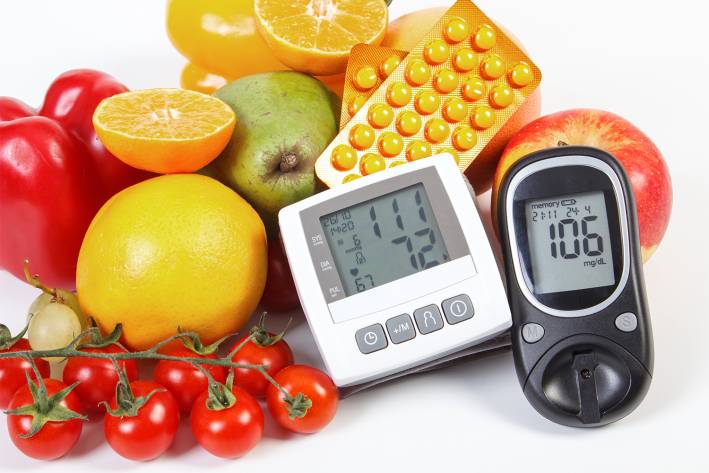In both Type 1 and Type 2 diabetes, the main problem is the body’s response to food.
When we eat, beta cells in the pancreas detect glucose (blood sugar) and release insulin, which tells other cells to ingest the glucose. This provides energy for cells and keeps circulating blood sugar at healthy levels.
Symptoms of Diabetes
Too much sugar in the blood stream damages blood vessels and wreaks havoc on organs and tissues.
This can lead to eye problems, kidney failure, cardiovascular disease, nerve damage, and many other conditions. People develop diabetes when their bodies lose the ability to properly handle blood sugar.
Type 1 Diabetes
In Type 1 diabetes, an autoimmune response destroys pancreatic beta cells. We don’t entirely understand why. Insulin is no longer released, cells don’t get the message to take in glucose, and blood sugar accumulates to toxic levels.
Until injectable insulin was developed, Type 1 diabetes was generally fatal.
Type 2 Diabetes
Type 2 diabetes is a bit more complicated. Cells gradually lose their ability to respond to insulin, causing toxic levels of glucose to accumulate in the bloodstream. This gradual loss could be caused by age, obesity, or other issues such as over-consumption of high-sugar foods over time.
As blood sugar accumulates, pancreatic cells have to work harder to produce more insulin. The condition gradually escalates: Cells become more insulin-resistant; glucose accumulates in the blood stream, and the pancreas compensates by producing more insulin.
Eventually, pancreatic beta cells burn out and the condition can become more like Type 1 diabetes, in which no insulin is produced at all.
Metabolic Syndrome
So far, not much can be done to prevent Type 1 diabetes. Type 2 diabetes is a different story.
The disease takes a long time to develop. It is often preceded by metabolic syndrome, a condition that comes with a laundry list of symptoms:
- Excess belly fat
- Too much bad cholesterol (LDL) and triglycerides
- Too little good cholesterol (HDL)
- Inflammation
- High blood pressure
- Excessive blood clotting and poor circulation
- Initial insulin resistance
- Elevated fasting blood glucose
If many of these warning signs look familiar, it’s because they are also associated with cardiovascular disease—metabolic syndrome’s close relative.
However, these conditions are controllable and even reversible with a healthy diet, supplementation, and lifestyle changes.





